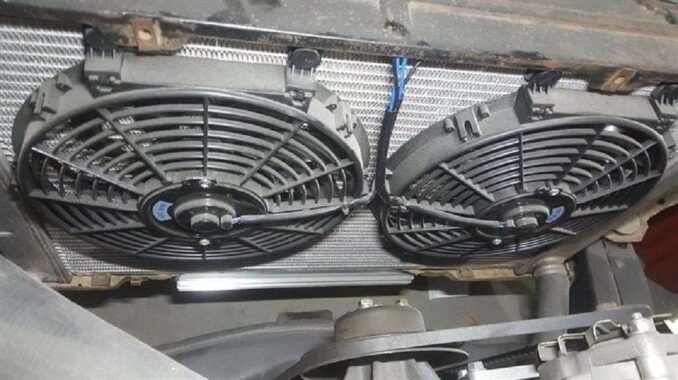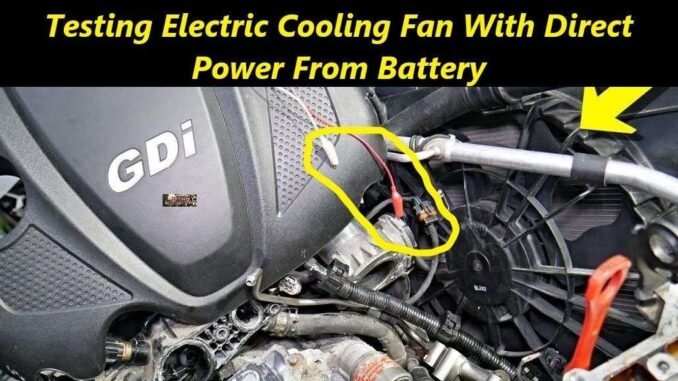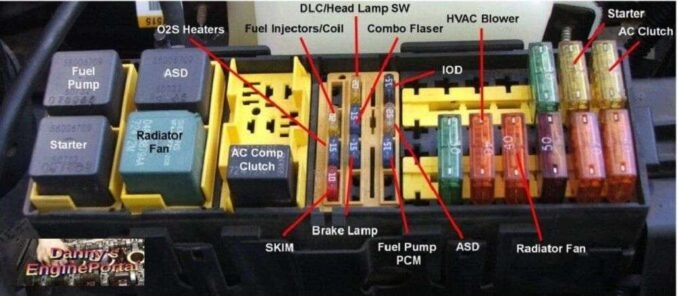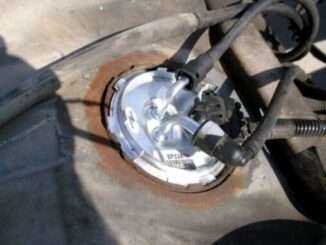
Is your engine is overheating, or shows signs of running hotter than normal. Then, you may have a problem, with your electric cooling fan.
Electric cooling fans are used, to move air through the radiator, when the vehicle is not in motion.
Consequently, any problem with the electric cooling fan, can stop it from transferring heat away from the radiator.
In newer vehicles, Electric Cooling Fan operation, is controlled by the (PCM) or a fan control module.
So, input from the engine coolant sensor, ambient air temperature, vehicle speed sensor and other sensors, are sent to the (PCM). As a result, the (PCM) uses this information to decide, when the electric cooling fan needs to be energized.
The electric cooling fan saves energy by only running, when it needs to remove excess heat away from the engine. Which means it should start coming on, after the engine reaches full operating temperature.

So, If Your Electric Cooling Fan Isn’t Coming On, You Can Bet There’s Something Wrong With:
- The fan assembly
- The circuit
- One of its components
If your engine is overheating and you suspect problems with the electric cooling fan, we have some important troubleshooting tips.
How Does Your Electric Cooling Fan Work
The electric engine cooling fan, uses a direct current (DC) electric motor. And, uses a thermo switch, module or computer control to turn it on or off.
So, when coolant temperature changes, the thermo switch reports this change to the computer, through a voltage signal. Then, the computer or module uses this information, to turn on the cooling fan through a fan relay(s).
What Can Stop Your Electric Cooling Fan From Working:
- Defective temperature switch, (ECT) Sensor or other sensor
- Engine thermostat is stuck OPEN (engine never gets hot enough, to turn on the fan)
- Faulty fan relay
- A wiring problem (blown fuse, loose or corroded connector, shorts, opens, etc.)
- Bad fan motor
- Defective fan control module
How To Test Your Fan Motor
The Quick Test
So, one quick way to check the fan is to start the engine, and turn on the A/C to max. If the fan runs, the fan motor, relay, fuse and wiring are all okay.
Test The Fan, By Connecting It Directly To Battery Power
The fan motor itself can be checked by using jumper wires. Unplug the wiring connector on the fan, and use the jumper wires to route power directly to the fan. If the fan motor is good, the fan should spin at normal speed when supplied with 12 volts.

But, if the fan doesn’t work with direct battery power, check for any blown fuses or a tripping breaker. If you find a blown fuse or tripped breaker, the fan motor might be pulling too much voltage. Check for a shorted wire or replace the fan motor.
How To Test The Fan Temperature Switch
You Can Test The Fan Temperature Switch, By Using A Test Light:
- Connect your test light to battery ground.
- Start and idle the engine, and back probe the connector terminals with the test light. One of them should turn on the test light.
- Wait for the engine to reach operating temperature.
- Now back probe the other wire at the connector. Your test light should come on. Otherwise, the switch is not working.
How To Test The Fan Relay
The relay is a critical part of a cooling system. When it malfunctions or breaks down, it affects the electric cooling fan. The problem spreads to the rest of the cooling system, the engine, and the entire vehicle.
The easiest way to know whether your relay is causing trouble, is to replace it with another relay. Check the power center for a similar relay. Something like a window or wiper relay.

If you can’t find one, you still can test the relay. Go ahead and read the steps described in Fuel Pump Relay – Function And Testing Procedures. The steps are the same for your relay.
Still another DIY test involves, shaking the cooling fan relay, and listening for any noises. Consequently, a broken armature will rattle around inside the relay.
Conclusion
So, when checking for electric cooling fan problems, a modern vehicle may present a challenge. Consequently, some fan circuits are wired, so the fan can come on at any time. Whether the engine is running or not. Above all, keep fingers and tools away from the fan blades.
BY DANNY BENDER




